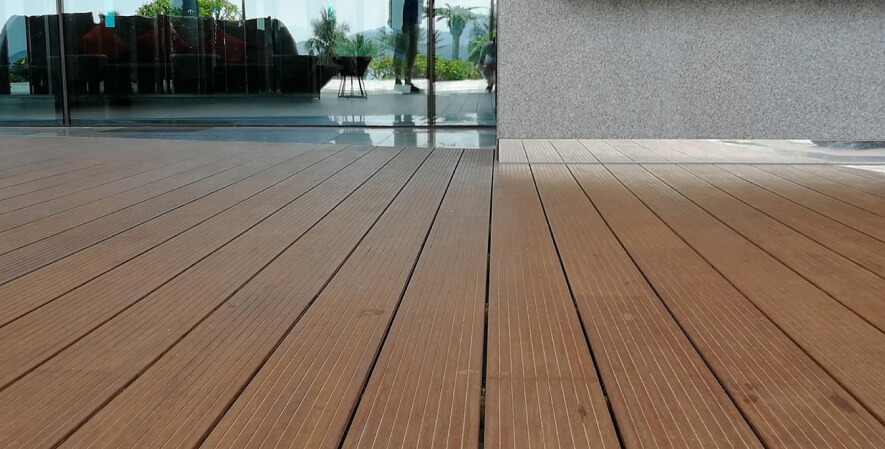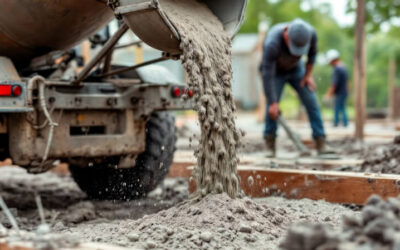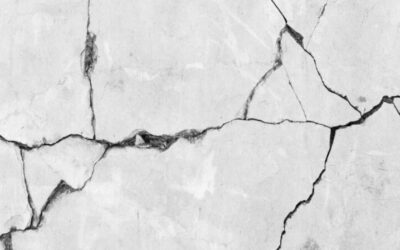The global landscape of construction is undergoing a significant transformation, driven by an urgent need for building materials that are not only effective and durable but also environmentally responsible.
Among the myriad of potential solutions, bamboo for building stands out as a time-honored material experiencing a remarkable resurgence in the modern era. For centuries, bamboo has served as a primary construction resource in numerous tropical regions, a testament to its inherent suitability for these climates.
Today, with increasing awareness of environmental concerns, bamboo for building is being recognized for its exceptional sustainability and versatility, positioning it as a key player in the future of eco-conscious construction, particularly in regions like Indonesia.
What Makes Bamboo Interesting?
Rapid Growth and Renewability: A Sustainable Imperative
The sheer speed at which bamboo grows is nothing short of astonishing. Certain species can achieve a growth rate of up to 1.5 inches (3.8 cm) in a single day, and during the warm summer months, some varieties can even exceed a foot of vertical growth daily.
This remarkable growth directly translates to exceptional renewability. Unlike traditional hardwoods that require decades to reach maturity, bamboo can be harvested within a mere 3 to 5 years, making it a highly sustainable resource for bamboo for building.
The urgency of combating deforestation and the increasing scarcity of hardwood resources underscore the critical importance of bamboo’s rapid renewability as a significant advantage in the pursuit of sustainable construction practices.
The extended timeframes required for hardwood maturation contribute substantially to deforestation when demand is high. Bamboo’s ability to quickly regenerate offers a solution by providing a building material that can be harvested frequently without causing long-lasting environmental harm, directly addressing growing concerns about unsustainable logging practices.
Furthermore, bamboo possesses a rhizome-dependent system that enables it to regenerate swiftly from its root network after harvesting, eliminating the need for replanting. This continuous regeneration cycle further diminishes the environmental impact associated with its use, as it reduces the energy and resources typically required for reforestation efforts linked to other building materials.
Unlike trees that must be replanted after being felled, bamboo shoots regrow from the existing underground rhizome system. This minimizes soil disturbance and lessens the resources needed for establishing new forests. Adding to its impressive credentials, bamboo produces 20 times more fiber compared to trees.
This significantly higher fiber yield per hectare underscores bamboo’s efficiency as a resource. More usable material can be obtained from a smaller area of land, further solidifying its position as a highly productive and sustainable option for meeting the demands of bamboo for building.
The greater material output per unit of land means that the same construction needs can be met with a potentially smaller land footprint, thereby reducing pressure on natural forests and land use change.
Impressive Strength and Versatility: Challenging Conventional Materials
Bamboo for building exhibits an impressive strength-to-weight ratio that is comparable to traditional timber. Intriguingly, some research even indicates that bamboo possesses a higher tensile strength than steel, reaching approximately 482.77 MPa, and a compressive strength that surpasses that of concrete.
This remarkable combination of strength and low weight renders bamboo for building exceptionally versatile, suitable for a broad spectrum of applications ranging from essential scaffolding and robust bridges to the construction of durable and resilient houses and larger buildings.
The superior strength-to-weight ratio of bamboo makes it an efficient and dependable structural material, presenting a viable challenge to the long-standing dominance of conventional materials like steel and concrete in numerous construction scenarios.
For a given weight, bamboo can withstand substantial loads, facilitating easier and more cost-effective transportation and handling at construction sites. Its high tensile strength signifies its ability to resist pulling forces effectively, while its compressive strength allows it to support vertical loads, collectively demonstrating its potential as a comprehensive structural material.
Furthermore, bamboo for building is inherently elastic and flexible, enabling it to bend without fracturing, even when subjected to extreme stress. The nodes present along the bamboo culm contribute to this flexural strength, enhancing its resistance to the dynamic forces imposed by wind and earthquakes.
This inherent flexibility and elasticity make bamboo for building particularly well-suited for construction in regions prone to seismic activity, such as parts of Indonesia.
Its ability to absorb and dissipate seismic energy significantly reduces the risk of structural failure compared to more rigid materials that might crack or break under similar stress. This characteristic presents a crucial advantage in areas with a high likelihood of earthquakes.
Environmental Advantages: A Choice for a Greener Future
During its rapid growth phase, bamboo absorbs considerable quantities of carbon dioxide from the atmosphere, surpassing the absorption rates of many traditional tree species.
In fact, a single hectare of bamboo can sequester approximately 17 tonnes of carbon dioxide annually, with some estimates suggesting an even higher capacity of up to 50 tons per hectare each year. Additionally, bamboo releases around 30% more oxygen into the atmosphere compared to most other plants.
Therefore, choosing bamboo for building actively contributes to the process of carbon sequestration, playing a vital role in mitigating climate change and improving the overall quality of the air we breathe.
By opting for bamboo for building, individuals and organizations are not merely constructing structures; they are making a conscious investment in a carbon-negative material that actively aids in the restoration of our planet’s health.
The capacity of bamboo to absorb and store substantial amounts of carbon dioxide throughout its lifespan makes it a powerful tool in reducing greenhouse gas emissions originating from the construction industry, a sector known for its significant contribution to climate change.
Moreover, the production of bamboo for building has a considerably lower environmental impact when compared to conventional materials such as bricks and concrete. Life-cycle assessments have indicated that the environmental impact of bamboo can be up to 20 times less than that of these traditional materials.
This reduced environmental burden stems from the minimal processing required for bamboo, coupled with its rapid renewability and carbon-sequestering capabilities, resulting in a much lower embodied energy compared to energy-intensive materials.
The energy consumed during the manufacturing and transportation of building materials contributes significantly to their overall environmental footprint.
Bamboo, in contrast, requires less energy for processing and is frequently sourced locally, further diminishing its ecological impact. Furthermore, the cultivation of bamboo is environmentally benign, requiring minimal water and no harmful pesticides or herbicides. Its extensive root system plays a crucial role in preventing soil erosion.
This eco-friendly cultivation process ensures that the selection of bamboo for building supports sustainable land management practices and helps protect vital ecosystems. Unlike many agricultural crops that demand significant water resources and chemical inputs that can pollute water sources and harm biodiversity, bamboo thrives with minimal intervention.
Exploring the Variety: Key Types of Bamboo for Construction in Indonesia
| Type | Diameter (cm) | Typical Applications | Key Properties |
| Bambu Batu | 14-20 | Columns, structural supports, roof battens | Thick walls, high strength |
| Bambu Hitam | 4-10 | Walls (interior & exterior), light-medium furniture | Long, versatile |
| Bambu Andong | 10-12 | Trusses, house construction, support/casting poles | Long, suitable for structural support |
| Bambu Apus | 6-8 | Rafters, walls (interior & exterior), weaving | Thin diameter, flexible, good wall thickness |
| Bambu Kuning | 2.5-5 | Ornamental; strength not ideal for structural use | Bright yellow color, aesthetic appeal |
Key Bamboo Types for Construction in Indonesia
Bambu Batu (Petung/Betung): The Strong Foundation
Bambu Batu, also recognized as Bambu Petung or Betung, represents a robust variety of bamboo for building in Indonesia, capable of reaching a substantial diameter of 14 to 20 cm upon maturity.
Its defining characteristic lies in its thick walls and dense flesh, which contribute to its exceptional strength. In the realm of construction, Bambu Batu is predominantly utilized for load-bearing structural elements, including support columns and structural columns. It is also commonly split and employed as roof battens and ribs.
When projects necessitate a strong and stable foundation, Bambu Batu emerges as the preferred choice for structural building in the Indonesian context.
The significant diameter and thick walls of this bamboo type directly correlate with its high strength and load-bearing capacity, rendering it suitable for the most critical structural components of a building.
Bambu Hitam (Pring Wulung/Peri Laka): Versatility in Design
Bambu Hitam, also known locally as Pring Wulung or Peri Laka, is a versatile type of bamboo for building that can achieve heights of up to 20 meters with a diameter ranging from approximately 4 to 10 cm.
This variety is prevalent in the soils of Java and Sumatra. In construction, Bambu Hitam is frequently employed for both exterior and interior walls, often installed in its whole form or intricately woven into visually appealing patterns. Its versatility extends to furniture making, where it is utilized to craft lighter pieces such as tables and shelves.
Bambu Hitam offers a valuable combination of strength and flexibility, establishing it as a popular choice for creating both structural wall systems and aesthetically pleasing interior design elements in bamboo building projects.
While not possessing the same thickness as Bambu Batu, its considerable length and manageable diameter make it well-suited for constructing enclosures and partitions, and its distinctive dark color adds a unique aesthetic dimension.
Bambu Andong (Gombong): Structural Support and More
Bambu Andong, scientifically classified as Gigantochloa pseudoarundinacea and also known as Bambu Gombong, is a type of bamboo for building that can reach lengths of up to 20 meters, although its diameter is relatively smaller, ranging from 10 to 12 cm. This variety thrives in humid and cooler environments and is often found in proximity to rivers and lakes.
In construction, Bambu Andong is commonly utilized for crafting trusses and other structural frameworks, particularly in residential house construction. Its size also makes it suitable for use as support beams or as poles for casting concrete.
Bambu Andong provides reliable structural support for residential building applications, especially in the construction of roof structures and as temporary support during various stages of the building process.
Its length and moderate thickness make it appropriate for creating the skeletal framework of a roof and for providing temporary support during construction.
Bambu Apus (Tali): Flexibility for Diverse Applications
Bambu Apus, also referred to as Pring Apus, Peri, or Bambu Tali (meaning rope bamboo), is a slender yet strong variety of bamboo for building. It typically reaches a mature diameter of only 6 cm but can grow to an impressive length of 20 meters, with a notable wall thickness of up to 13 mm.
In the context of building, Bambu Apus is commonly used for constructing rafters and walls. For exterior walls, it can be employed in its split form or used whole, while for interior walls, it is frequently woven to create attractive and textured surfaces. Its designation as “rope bamboo” hints at its inherent flexibility.
The slender yet strong nature of Bambu Apus renders it ideal for applications demanding flexibility and intricate craftsmanship, such as weaving and creating the finer elements of roof structures in bamboo building.
Its thin diameter and considerable length, coupled with a respectable wall thickness, suggest a good balance between strength and flexibility, making it suitable for more detailed construction and design work.
Bambu Kuning
Bambu Kuning, or yellow bamboo, is distinguished by its vibrant yellow color, which makes it more suitable for ornamental purposes due to its aesthetic appeal.
Generally, its strength is not considered as robust as that of other bamboo types when it comes to primary building materials. While visually striking, Bambu Kuning might be better suited for decorative elements and non-load-bearing applications in building projects where visual appeal is prioritized over high structural strength.
Its primary attraction lies in its color, suggesting its use in architectural details or landscaping rather than the main structural framework.
Advantages and Disadvantages of Building with Bamboo
Bamboo Benefits: Sustainability, Cost-Effectiveness, and Resilience
As previously discussed, bamboo for building offers a compelling array of benefits, starting with its exceptional sustainability. Its rapid growth cycle, ability to regenerate without replanting, remarkable carbon sequestration capabilities, and low overall environmental impact make it a standout choice for environmentally conscious construction.
Beyond its ecological advantages, bamboo for building also presents significant cost-effectiveness, particularly in regions like Indonesia where it is readily available. Raw bamboo can be an affordable material, and its local abundance often translates to lower material costs compared to imported options like steel and concrete.
Furthermore, the potentially faster construction timelines associated with bamboo for building can lead to reductions in labor expenses. The affordability of bamboo for building makes it an economically attractive option, especially for sustainable and low-cost housing initiatives in Indonesia.
Lower material costs due to local availability, reduced transportation expenses, and potentially quicker construction timelines all contribute to the overall cost savings. Finally, bamboo for building exhibits impressive resilience. Its high tensile and compressive strength provide structural integrity, while its inherent flexibility makes it an excellent material for constructing earthquake-resistant structures.
Bamboo can also withstand high temperatures and resist strong winds. Structures built with bamboo for building can demonstrate remarkable resilience against natural disasters common in Indonesia’s tropical climate, offering a safer and more durable alternative to some conventional materials.
The combination of strength, flexibility, and resistance to certain environmental factors makes bamboo a robust material capable of withstanding various challenges.
Bamboo Disadvantages: Treatment, Durability, and Market Perceptions
Despite its numerous advantages, bamboo for building does present certain challenges that need to be addressed. Untreated bamboo is susceptible to attacks from insects, particularly termites, and fungi.
Therefore, implementing effective preservation methods is crucial for ensuring the longevity and structural integrity of the building, especially in the humid and pest-prone tropical conditions of Indonesia.
Common treatment methods include boiling the bamboo to remove starches that attract insects and applying borate treatments, which are known to be effective and environmentally benign. Like any timber, bamboo can also shrink, especially as it loses moisture. The long-term durability of bamboo for building in Indonesia’s climate depends significantly on the quality of construction and the effectiveness of preservation efforts.
While inherently strong, the lifespan of bamboo structures requires careful attention to design that minimizes exposure to moisture and consistent maintenance, including periodic inspections and re-application of protective finishes.
The tropical climate presents challenges such as high humidity and heavy rainfall, which can negatively impact bamboo if not adequately addressed through design and maintenance. Lastly, in some regions, bamboo for building might be perceived as a less prestigious or temporary material compared to conventional options.
Overcoming these perceptions requires showcasing the advancements in bamboo treatment and construction techniques, highlighting the beauty, strength, and sustainability of modern “bamboo for building” designs and demonstrating its viability as a long-term building solution.
Historical use of bamboo in less permanent structures might contribute to this perception, so highlighting innovative and architecturally significant bamboo buildings can help shift public opinion.
Bamboo Panels: A Smart and Sustainable Alternative to Hardwood
Bamboo panels represent an innovative and sustainable approach to utilizing bamboo in construction. By processing bamboo fibers into versatile materials like chipboard, flakeboard, and medium-density fiberboards, bamboo panels offer a compelling alternative to traditional hardwood.
Furthermore, engineered bamboo products, such as laminated bamboo lumber (LBL) and cross-laminated bamboo (CLB), provide even greater levels of strength and stability compared to raw bamboo.
Notably, some types of bamboo plywood have been reported to be as strong as or even stronger than conventional hardwood plywood. This makes bamboo panels a sustainable and often superior alternative to traditional hardwood, positioning them as an excellent choice for environmentally conscious construction and design projects.
By transforming raw bamboo into panels, manufacturers can create building materials with consistent properties and high structural integrity, effectively replacing hardwoods in a variety of applications and reducing the pressure on natural forests.
Additionally, bamboo panels can exhibit greater resistance to moisture compared to conventional wood panels due to the inherent dense grain structure of bamboo.
This natural moisture resistance makes bamboo panels particularly well-suited for flooring and decking applications in Indonesia’s humid tropical climate, where moisture-related issues are a significant concern with traditional wood. The high humidity prevalent in tropical regions can cause wood to warp, swell, and decay.
Bamboo’s natural resistance to moisture helps mitigate these problems, resulting in more durable and stable flooring and decking solutions. Beyond their structural and environmental benefits, bamboo panels offer remarkable design flexibility. They can be readily used in a wide array of applications, including wall paneling, flooring, privacy fencing, ceilings, blinds, and even rugs.
Their workability is similar to that of hardwood, as they can be easily cut, sanded, nailed, and screwed using standard woodworking equipment. The natural texture and color of bamboo provide a fresh, elegant, and aesthetically pleasing finish.
This versatility in application and the inherent beauty of bamboo allow architects and builders to create unique and visually appealing spaces while adhering to sustainable building principles.
The ability to process bamboo into various panel types and finishes provides designers with a broad range of options to achieve diverse looks and functionalities while maintaining a commitment to sustainability.
Discover ecoSmart’s Premium Bamboo Panel Solutions for Your Project
ecoSmart is a distributor and importer of some global brands, including Dasso Group, to provide you with quality building and maintenance solutions with sustainability in mind in Indonesia.
Dasso Bamboo Decking
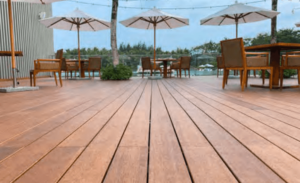
ecoSmart is proud to offer Dasso bamboo decking, a premium-selected, eco-friendly alternative to traditional hardwood timbers. Crafted from compressed bamboo strips using advanced Thermal treated Technology, this decking is specifically designed for outdoor use in demanding environments.
DASSO bamboo decking boasts exceptional stability and precision, making installation straightforward. Its hardness and durability are comparable to ironwood, ensuring long-lasting performance.
Furthermore, it offers excellent resistance to fire, mould, and termites. The boards feature a convenient 2-side groove and reversible faces (smooth or reed), providing design flexibility.
This product is backed by a 25-year limited warranty for residential applications and a 10-year limited warranty for commercial applications against material defects, rot, decay, and termites.
Imagine a stunning, durable deck that not only enhances your outdoor space but also aligns with your commitment to sustainability. Dasso bamboo decking is the perfect choice for your Bali home or commercial project.
Its superior resistance to the tropical climate and long-lasting performance make it a smart and eco-conscious investment.
Dasso Bamboo Ceiling
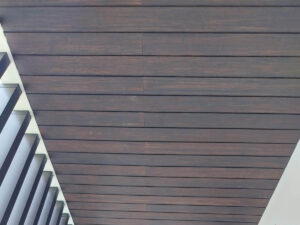
Bring natural elegance indoors with Dasso bamboo ceiling panels, crafted with Dasso’s patented thermo and fusion treatment.
This process creates a material ideally suited for both indoor and covered outdoor use, providing unparalleled warmth and natural beauty to any project. It’s durable, dimensionally stable, resistant to bending and buckling, and features zero leaching. Easy installation is ensured with a tongue and groove system.
Create a sophisticated and eco-friendly interior with Dasso bamboo ceiling panels. Their natural elegance and exceptional durability will transform any space, adding a touch of sustainable luxury to your design.
Dasso Bamboo Decking XTR
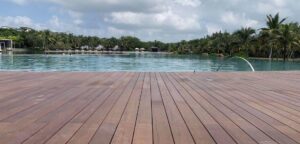
For the ultimate in outdoor performance, ecoSmart presents Bamboo Decking XTR. This fused bamboo product from DassoXTR is exceptionally durable. It boasts a Class A fire rating, is zero VOC, features no leaching of chemicals, and is highly resistant to decay, mold, and insects, including termites.
The innovative tongue and groove end-matched locking system ensures a seamless and 30% faster installation compared to traditional decking. For those who demand the absolute best in outdoor decking, Bamboo Decking XTR is the answer.
Its unmatched durability and resistance to the harsh tropical climate guarantee a long-lasting and stunning outdoor space for years to come.
Choose Sustainability, Choose Quality, Choose ecoSmart for Your Bamboo Building Needs
ecoSmart stands as Bali’s leading provider of eco-friendly and sustainable building materials with sustainability in mind, dedicated to offering top-tier solutions for your construction and renovation endeavors.
Our selection of premium bamboo panels, including our exceptional bamboo decking and ceiling options from Dasso, are carefully chosen for their durability, sustainability, and aesthetic appeal.
Ready to embrace the future of sustainable construction? Visit our showroom at Jl. Sunset Road No.1, Kuta, Bali, Kabupaten Badung, Bali 80361, explore our comprehensive range of eco-friendly building materials and discover how bamboo for building can revolutionize your next project.

